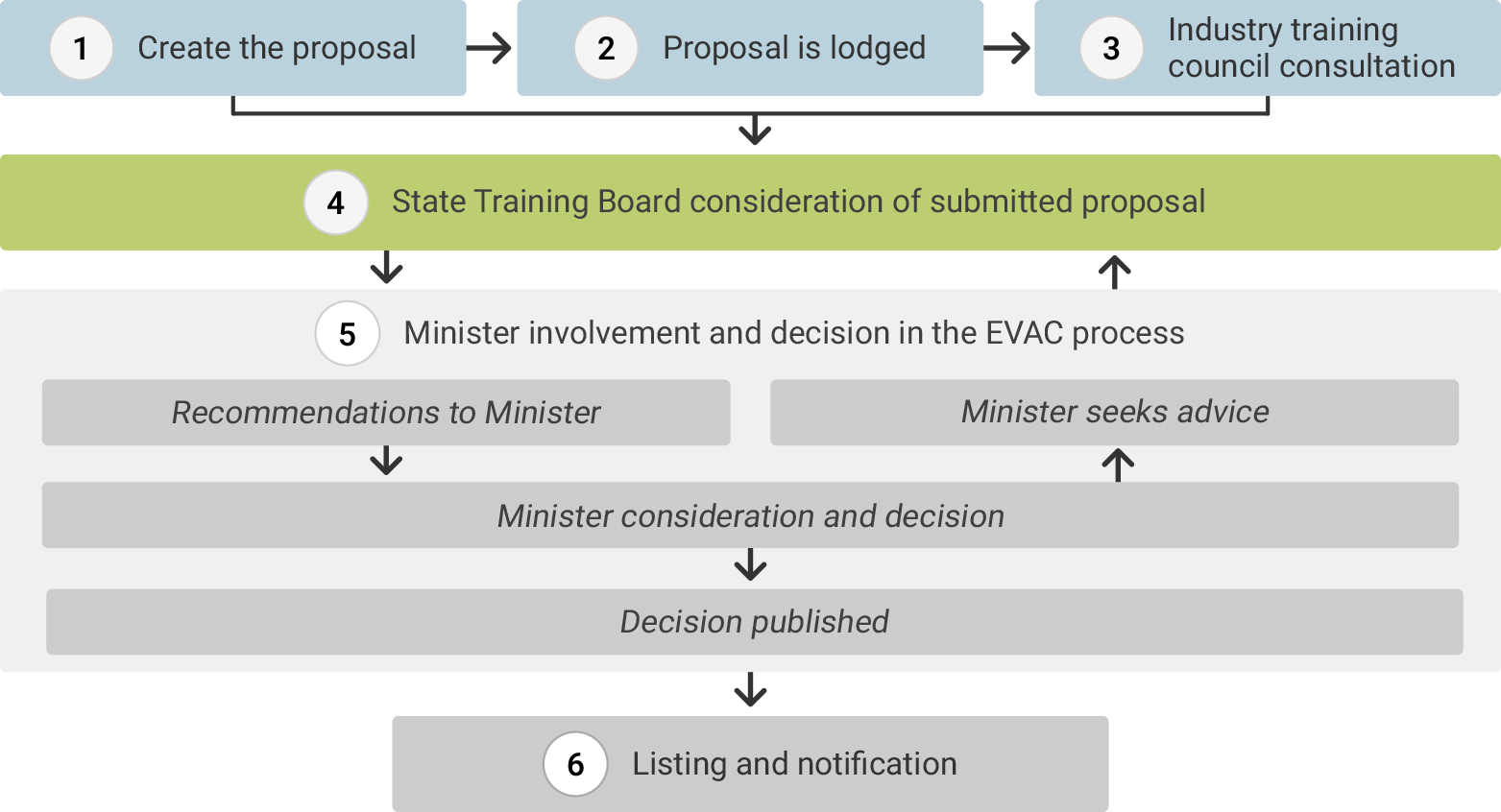To meet industry needs it maybe necessary to establish or vary an apprenticeship*. The steps for how to do this, and the full establishment and variation of apprenticeships process, are detailed here.
Section 60C of the Vocational Education and Training Act 1996 allows the Minister for Training and Workforce Development to establish or vary apprenticeships and traineeships based on advice from the WA State Training Board. The Board, the Department of Training and Workforce Development and WA's industry training councils each play a key role in the establishment and variation of apprenticeships.
To establish an apprenticeship or vary an existing apprenticeship, a proponent will need to submit a Notice of Intent to the Board.
The proponent may be an individual business/employer, industry group, union, registered training organisation, industry training council or other stakeholder.
The process for proposing the establishment of a new apprenticeship, or variations to an existing apprenticeship, is detailed in the workflow diagram below. Each step of the process demonstrates how a submitted proposal flows through to the areas of review, consideration, approval decision to listing and notification to the proponent and then completed.
Step 1: Creating a proposal proposal
*Apprenticeship means any employment-based training scheme whether termed an apprenticeship, traineeship, cadetship or internship.
Overview of the establishment and variation of apprenticeship process
This workflow outlines the steps in the process for the establishment and variation of apprenticeships (Class A and Class B qualifications). Follow the multi step guide, which provides instructions and the proposal forms to be submitted for each stage of the process, in the numbered steps menu on this page.
Current and completed establishment and variation of apprenticeship proposals
Establishment and variation of apprenticeships guidelines
On 18 August 2022, the Board endorsed new Guidelines for the establishment and variation of apprenticeships. These guidelines are effective for all new applications from 19 August 2022.
For full details on the establishment and variation of apprenticeships process, or assistance with lodging your proposal, please look through the guidelines document.
The Board has also developed a Guidance Note, which includes a threshold for establishing Class A qualifications and guidance on the use of the term 'apprentice'.
View or download the Guidelines and Guidance Note
Register of Class A and B qualifications
Under the VET Act, the Department of Training and Workforce Development must keep and make available to the public a register of Class A and B qualifications. The register includes:
- the Class A and Class B qualifications;
- any conditions applicable to those qualifications; and
- any requirement applicable to training contracts for those qualifications.
Class A – This qualification can only be achieved by entering into an employment-based training contract with an employer; ie the qualification is delivered predominantly through employment-based training undertaken with an employer. A training plan is drawn up between the employer, registered training organisation and the apprentice/trainee that sets out the ratio of on and off the job training.
Class B – This allows a qualification to be achieved either by entering into an employment-based training contract with an employer or through institutional delivery; ie the qualification is delivered predominantly through classroom/online training with some practical experience in a workplace or in a simulated environment that reflects workplace conditions.
Class B with condition – A qualification that can only be obtained through a training contract, but enables delivery of the qualification through an institutional learning pathway for onshore international students.
The Register of Class A and B qualifications (the Class A/B Register) is available from the Department of Training and Workforce Development website.
Penalties
Penalties may apply to a registered training provider or an employer who does not comply with the classification of a qualification.



